I wrote this article in Japanese and translated it into English using ChatGPT. I also used ChatGPT to create the English article title. I did my best to correct any translation mistakes, but please let me know if you find any errors. By the way, I did not use ChatGPT when writing the Japanese article. The entire article was written from scratch by me, Saikawa Goto.
Introduction
Movies and books covered in this article

Three takeaways from this article
- Why was the Black Hole able to be photographed when it was supposed to be an “invisible object”?
- What challenges are involved in photographing a Black Hole?
- What is the “Nobel Prize problem” that comes with large-scale scientific research?
Self-introduction article


Published Kindle books(Free on Kindle Unlimited)
“The genius Einstein: An easy-to-understand book about interesting science advances that is not too simple based on his life and discoveries: Theory of Relativity, Cosmology and Quantum Theory”
“Why is “lack of imagination” called “communication skills”?: Japanese-specific”negative” communication”
The quotes in the article were translated using ChatGPT from Japanese books, and are not direct quotes from the foreign language original books, even if they exist.
Structure of This Article:
This article introduces a book that delves into the details of the project that first observed a Black Hole. While it briefly touches on “what is a Black Hole,” the main focus is on the project itself. Therefore, this article will not almost explain “Black Holes” themselves.
For information about Black Holes, please refer to the following article mentioned below.
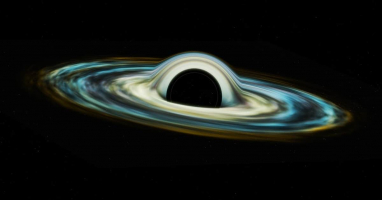
In this article, too, I will touch on some of the properties of Black Holes, but I will mainly focus on only the part related to “observation.”
How was the Amazing and Grand Project of “Capturing Black Holes” Carried Out?
Why was it Possible to Photograph Black Holes?
On April 10, 2019, a historic press conference was held in the history of science. It was announced that Black Hole had been successfully photographed and the captured image was simultaneously released worldwide.


The press conference at that time was unprecedented in terms of scientific research announcements. The “lifted time” was set at 22:07 Japanese time, which is unusual as announcements are typically made in one-hour increments and press conferences are not usually held so late at night. It was probably scheduled at this time due to the simultaneous worldwide announcement. This emphasis on a simultaneous announcement shows how much attention it was receiving.

Usually, scientific research does not attract the interest of the general public, but when it comes to Black Holes, it would be a different story. They appear in movies, anime, and science fiction, and even those who don’t understand complex theories can easily imagine what they are. Moreover, it has been announced that the celestial body that is said to be “completely black because it absorbs light” has been “observed.” It would be interesting to what that means.
Now let’s start by explaining that point. It’s about why “taking a picture of a Black Hole” is possible.
A Black Hole is a “celestial body that even absorbs light” and endlessly sucks in everything around it. However, even though it sucks in everything, it doesn’t immediately get sucked in. Various things are congested around the Black Hole, just like in traffic jams.
The substances that are congested revolve around the Black Hole while waiting to be eventually sucked in. However, while revolving, they collide with other substances. Since they are all revolving at incredible speeds, friction heat is generated when they collide.

In other words, around a Black Hole, a massive amount of friction heat is constantly being generated. This friction heat emits visible light, which can be seen by our eyes and can also be captured in images.
So, when I say “they have successfully captured an image of a Black Hole,” it doesn’t mean they have a photo of the Black Hole itself. Rather, they can capture the “light created by friction heat” surrounding the Black Hole. This results in an image that looks like a “donut-shaped ring of light with a black hole in the middle.”
Scientists had predicted this image even before the observation, saying “if we capture an image of a Black Hole, it should look like this.” And now that the image as predicted has been obtained, it has been determined that “they have captured an image of a Black Hole.”
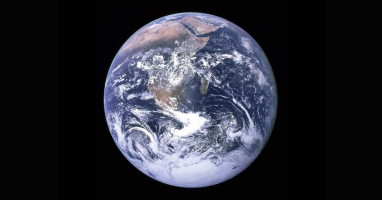
What is the Scientific Significance of “Capturing Black Holes”?
Capturing Black Holes is not only of great interest to the general public, but also to scientists. Of course, there is also pure scientific curiosity as a scientist.

However, it is also a project with scientific significance.

First of all, it’s important to note that the simulation of “if we take a picture of a Black Hole, we should see a ‘black hole'” is just a theoretical concept. In the world of science, there is a big difference between “what should happen in theory” and “what actually happens in reality.” No matter how brilliant a theory may be, it is only scientifically valid if its predictions can be tested and verified through experiments or observations.
In other words, whether or not a “black hole” will actually appear in a picture of a Black Hole can only be confirmed by actually taking the picture. First, we can point to the fact that they have settled this issue as an achievement.
Furthermore, there is a well-known hypothesis called the “cosmic censorship hypothesis” related to Black Holes, and it was expected that direct observation would help verify this hypothesis as well.

A Black Hole is a celestial object with a very simple structure composed of only two elements: the “singular point” (an extremely tiny central part) and the “event horizon” (the limit line where light cannot escape). You can imagine it as a baseball placed on the mound of Angel Stadium of Anaheim as the “singular point,” and the outer wall of the stadium as the “event horizon.”
Black Holes are very peculiar celestial bodies that have been studied a theoretical framework long before their existence was suggested. It was theoretically known that “singular point” is formed 100% by gravitational collapse. However, it was impossible to determine from the theoretical side whether an “event horizon” would be formed.
Therefore, it means that it could be that there exist Black Holes that have only “singular points” and do not have an “event horizon.” This is called a “naked singularity.”
The “cosmic censorship hypothesis” is the hypothesis that “naked singularity” will not occur. It was proposed by a mathematician named Penrose, but it has not been proven. If a “naked singularity” were observed by observing a Black Hole, this “cosmic censorship hypothesis” would be negated.
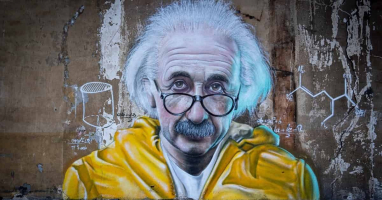
In this shoot, the “naked singularity” was not captured, so this hypothesis is still alive. In this way, in the sense of that it can support various claims,” capturing a Black Hole” is important.
In this book, it is also mentioned some other what can be confirmed by “capturing a Black Hole.” The author seems to think that this project is very “worthwhile” because multiple achievements can be expected.
How the EHT Project was Born
The project for capturing a Black Hole is called the “Event Horizon Telescope (EHT) Project,” and it was led by a person named Shep Doeleman. This book follows the story of Shep and how the EHT project unfolded.
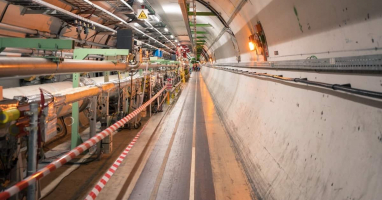

The core of the EHT project is VLBI (Very Long Baseline Interferometry). This is a system that takes simultaneous images using multiple radio telescopes located in various regions on Earth and combines their data to capture objects that cannot be seen by a single telescope. For the Black Hole imaging this time, almost all Millimeter Telescopes on Earth were mobilized, making the EHT project the “largest telescope in human history.”
Alan Rogers was the person who developed the VLBI system, and it was through Shep’s meeting with him that the EHT project began.

Shep was a very capable student, but had a difficult time in graduate school due to bad luck. Eventually, he moved to Haystack Observatory after being ditched by his professor, and that’s where he met Rogers.
Shep didn’t have a deep understanding of VLBI, but he was fascinated by its mechanism. As a result, his boss Rogers gave him a mission to observe submillimeter waves using VLBI. It was a difficult research that would take years, but if successful, they could observe a Black Hole. This was the catalyst for Shep to create the EHT project.

Moving on to the actual story of Black Hole imaging, let me first tell you about a theory that was unexpectedly proven through VLBI. It’s called “Plate Tectonics,” which says that continents are moving.
There are celestial bodies called “Quasars” in space. They are so far away from the Earth that they can be treated as an “immovable point” from the Earth’s perspective (although Quasars are actually moving at the speed of light, they are far enough away from the Earth that this movement can be ignored).
Now, let’s observe such a “Quasar” using two radio telescopes on Earth.

And then, the arrival time of the radio wave changes from day to day. Since the “Quasar” is so far away that it can be considered an “immovable point,” the difference in arrival time is believed to be due to the fact that the “radio telescope itself is moving.” However, the radio telescope fixed to the ground cannot move on its own.
This means that the continent on which the radio telescope is mounted has moved. This demonstrated the correctness of “Plate Tectonics.” It’s quite a magnificent story, isn’t it?
The Biggest Challenge of the EHT Project

The Black Hole captured in the EHT project is called “M87,” and is a “regular” Black Hole located 55 million light years away from Earth.
There are actually two types of Black Holes, and a special one called a “supermassive Black Hole” also exists. It is currently believed that every galaxy has a “supermassive Black Hole” at its center, and the EHT project was originally focused on capturing one of these, called “Sgr A*”.
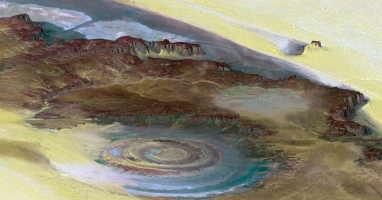
Even though observing any Black Hole is a great achievement, the supermassive Black Hole “Sgr A*” at the center of the Milky Way galaxy is particularly important. That’s why capturing an image of it was the main goal. It’s located 26,000 light-years away from Earth, which is incredibly far compared to “M87,” but because of its enormous size, it’s believed to shine even brighter than a normal Black Hole and was easier to find.
However, even if it’s easier to find, the hurdle to capture an image is very high. This is because three obstacles must be overcome.

The first obstacle is called “the scattering screen,” and although its true nature is still unclear, it is known to interfere with radio waves. The second obstacle is the hot gas surrounding the Black Hole. It’s unclear whether this gas is transparent (i.e. lets radio waves through) without actual observation.

And finally, the weather on Earth. As mentioned above, VLBI synchronizes radio telescopes at various points on Earth to make simultaneous observations, which means that the weather must be “clear” at all points where radio telescopes are located. Well, it doesn’t have to be clear, as long as the “clouds are not thick and it is not raining,” but the weather has to be “suitable for astronomical observation” in most, if not all, areas where radio telescopes are located to make Black Hole photography feasible.
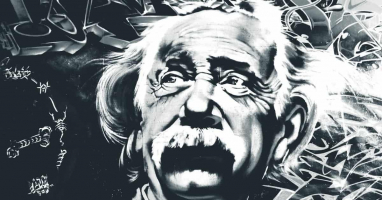
Fulvio Melia later said that these three conditions occurring together are as rare as a total solar eclipse visible from the ground.
While the nature of the “scattering screen” and “hot gas” is hard to say without observation, As for the weather, it’s an issue on Earth. It is naive to think that we can get by with adjusting the date of use of the telescope ……. The reason is that giant telescopes are shared by countries worldwide and not something that can be flexibly used for only a single research project. The “usable date and time” are predetermined, and all we can do is hope for “clear weather” at that time.
There are various technical issues besides this weather problem, but just this weather story alone should help you understand how difficult the EHT project is.

Various Challenges in the EHT Project
There are many obstacles in the EHT project, and Shep has been busy dealing with them.
There was an issue that Shep was frustrated with until the very end. It was related to the ALMA, the world’s largest radio telescope located in the Chilean highlands.

The EHT project requires synchronizing multiple radio telescopes, and to do so accurately, it is necessary to connect a very precise clock called a “hydrogen maser atomic clock” to the radio telescopes.
This “hydrogen maser atomic clock” can also be used for military purposes and is not allowed to be taken abroad without government permission. In other words, the EHT project must purchase the “hydrogen maser atomic clock”, negotiate with the government to take it abroad, and spend a huge amount of effort to install it at each radio telescope.
They’ve done that much, one would think that observations using the “hydrogen maser atomic clock” should have priority for the EHT project. Shep also thought so. He thought that the EHT project should have naturally priority for the observation using the “hydrogen maser atomic clock” because it is to be installed with EHT project funds.

However, ALMA had a different view. Any equipment enhancements made to the radio telescope, regardless of who did it and why, would be treated as “open source”. And they said that when it comes to their use, priority would be given to “research institutions that submit the best plans”.
As someone who doesn’t know much about scientific research, ALMA’s position seems pretty extreme to me, but it may be an inevitable decision from the perspective of operating a shared asset like a telescope. Shep fought against this decision for years but ultimately, the outcome never changed.

Also, there was this incident.
The EHT project required a huge amount of funding and naturally applied for various grants. Of course, there were always competitors when applying for grants. At one time, the EHT project was vying for a grant with a radio telescope called CARMA. In other words, “either the EHT project or CARMA could get the grant.”

And, the EHT project won the competition. While this is good news, CARMA lost the grant application and it was decided that it “can only survive for one more year.”

However, it’s a problem for the EHT project. This project synchronizes radio telescopes from around the world, so securing as many usable radio telescopes as possible is important. However, if CARMA were to win the grant application, the EHT project would run out of funds.
It’s a situation of being between a rock and a hard place, and it’s an event that symbolizes the struggles that the EHT project has to deal with, having to meet various conditions at the same time.

After various adjustments, they finally managed to get to the actual shooting. However, at that moment, an unexpected event occurred. It was an event that was not directly related to the EHT project, but it caused Shep to tighten his nerves.
There was a project called “BICEP2,” and the research group announced that they had “observed fluctuations in the cosmic microwave background,” which attracted a lot of attention. However, immediately after that, there was a report that “this discovery may be an error.” It was pointed out that there may have been a mistake in the process of removing noise from cosmic dust during the scrutiny of observation data.
The research group could not refute this indicate, and eventually reluctantly admitted the “possibility of error.” Although their observation was not clearly pointed out as “wrong,” due to being indicated the possibility of deficiencies in the data scrutiny process, they were left with a vague conclusion of “it may have been right or it may have been wrong.”

As a result of this event, Shep realized that they had to announce the results without any doubt, so they changed the analysis method from the original plan. They set up a system where the same observation data was examined in three different places without sharing any analysis results with each other.
And as a result of the analysis conducted at the three locations, the results were all the same, and they were able to confidently announce the results.

This is only a small part of the story covered here, but the book goes on to detail the “behind-the-scenes” of the project in this way. While there may be many books on scientific theory out there, I think there are not many works that depict the project itself, so I hope it will be interesting to read.
“Nobel Prize problem” Associated with a Huge Project
In recent years, scientific research has become very large in scale. To achieve results, a huge facility such as an accelerator or telescope is necessary, and the number of people involved inevitably becomes enormous. And this reality of scientific research can also lead to the complicated problem of “who will win the Nobel Prize.”

At the Nobel Prize, the number of winners and the eligible fields are clearly defined. For example, it would be well known that “it is not given to the deceased”, “organizations are excluded, and only individuals are eligible”, and “up to three people per prize per year.”
Of course, there is no information leaked before the Nobel Prize is announced. Therefore, in scientific research involving hundreds or thousands of people, it is necessary to organize the project in advance so that the Nobel Prize selection committee can identify “who is the leader of this project.”

And in this regard, the EHT project was greatly confused. This is because Shep, who had been leading the project from the very beginning, began to become wary of “having someone take credit for his achievements” as the project grew larger.

This is related to the transition of the members of the EHT project in the course of its development.
Originally, the EHT project was being carried out with members personally recruited by Shep. However, after a while, there were problems mainly with funding, and the project came to a standstill. Upon learning of this situation, a scientist named Heino independently raised funds and tried to join the EHT project with that as a contribution. Based on this book, it feels like Heino took that action purely for the sake of the project.
However, Shep was wary of Heino’s moves. He thought that Heino might be trying to take over the project.

Shep was not a university professor, but just a researcher at an observatory. That’s why he risked everything for the EHT project. If he could complete the project with the members he gathered, he could take all the credit without any problem. But if Heino joins the project, they will need to reorganize the team.
And if that happens, Shep would be in the position of “someone who might be appointed by the council to be the project leader”. However, it’s not certain that he will be appointed. There is a possibility that someone from Heino’s side will be appointed as the leader, and if that happens, even if the project is successful, it will not be Shep’s accomplishment.

Shep was always struggling with these conflicts throughout the project’s progress, which ended up affecting the entire project.
This is a common issue with massive projects like this, which is often referred to as the “Nobel Prize problem,” and it is likely to happen again in the future. I think it’s best to change the regulations to keep up with the changing times, but that depends on the Nobel Prize committee. As long as the regulations don’t change, these human issues will continue to be a part of it.
Conclusion

This book is written by the author who closely followed Shep from the middle of the project, and provides an overview of the entire project centered around Shep. Therefore, the text doesn’t touch on how Japan was involved in this project that involved the whole world.
However, Watanabe Junichi, the Deputy Chief of National Astronomical Observatory of Japan (who is also the supervisor of the Japanese version of this book), explains in detail Japan’s contributions. The content conveys that Japan played an active role in various aspects, such as the production of equipment and the development of analysis methods.
Although not mentioned in this article, a celestial body called a Black Hole is theoretically derived from Einstein’s General relativity equation. The research has been led by theory, and the existence of a celestial body called Black Hole was gradually suggested and its existence was eventually recognized.

However, until the EHT project, it can be said that the problem of whether “Black Holes really exist” was unresolved. Although various phenomena were known that could not be explained without assuming the existence of Black Holes, it cannot be definitively said that “Black Holes exist” just because of that.
In that sense, it can be said that the EHT project has finally solved the homework left behind by Einstein over a long period of time. It’s a magnificent story.

Published Kindle books(Free on Kindle Unlimited)
“The genius Einstein: An easy-to-understand book about interesting science advances that is not too simple based on his life and discoveries: Theory of Relativity, Cosmology and Quantum Theory”
“Why is “lack of imagination” called “communication skills”?: Japanese-specific”negative” communication”

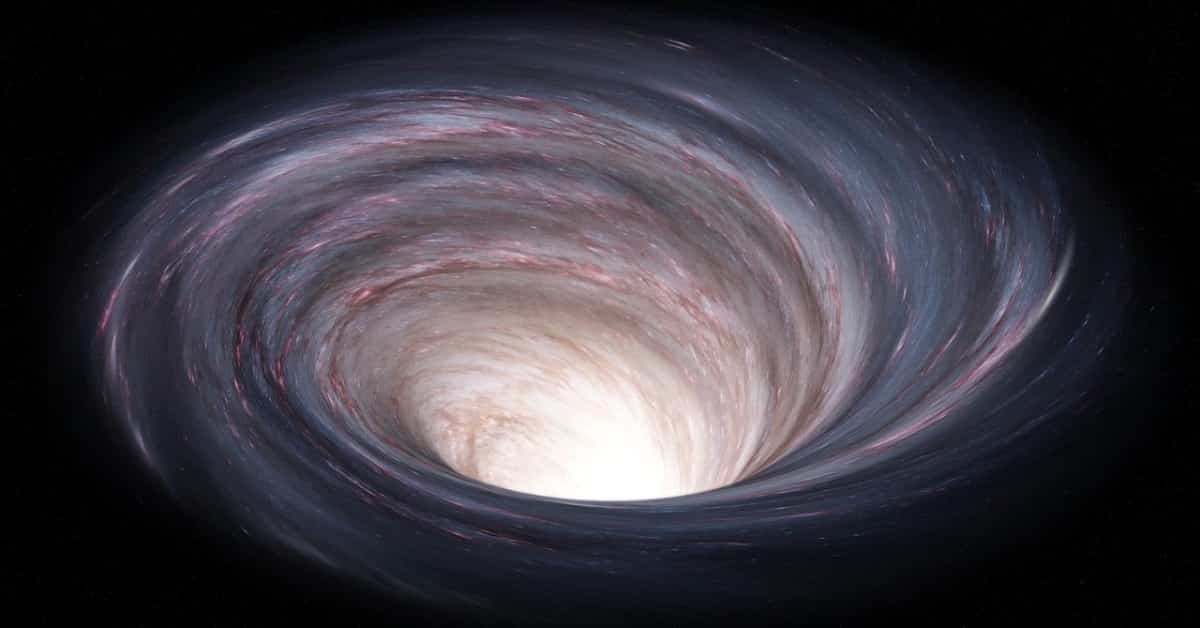





コメント